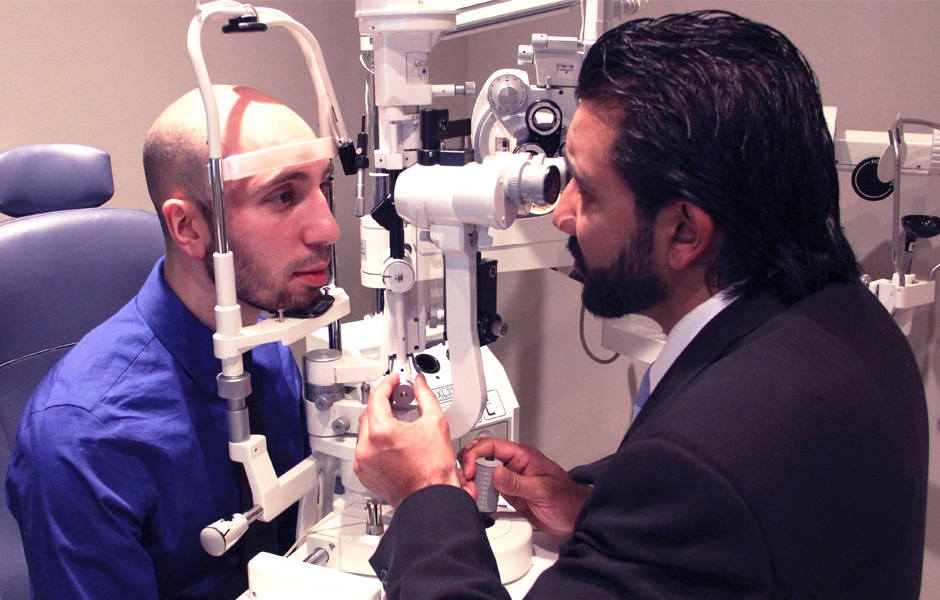Understanding the Various Vision Correction Procedures Available for Clearer View
In the realm of vision modification treatments, a wide range of alternatives exist to resolve refractive errors and give individuals with clearer view. Let's explore the details of these procedures and dropped light on the course to attaining enhanced vision clarity (Andalusia Pediatrics).
LASIK Surgery
LASIK surgical treatment is an usual refractive treatment utilized to correct vision issues such as farsightedness, astigmatism, and nearsightedness. This medical strategy, which represents Laser-Assisted in Situ Keratomileusis, aims to reshape the cornea to enhance exactly how light is concentrated on the retina, eventually boosting vision clarity. During the procedure, a thin flap is created on the cornea, and a laser is used to eliminate specific quantities of cells to improve it properly. This improving permits for light to be accurately concentrated onto the retina, dealing with refractive mistakes.
One of the key benefits of LASIK surgical procedure is the fast improvement in vision experienced by individuals. Generally, LASIK surgery is a preferred option for people seeking a long-lasting remedy for their vision troubles.
PRK Procedure

PRK is a suitable alternative for people with slim corneas or those at a greater risk of eye injuries, as it does not involve creating a corneal flap. The healing procedure for PRK is a little longer contrasted to LASIK, as the epithelium requires time to restore. People may experience discomfort and blurred vision for a few days complying with the procedure.
In spite of the longer recuperation time, PRK can generate outstanding cause vision improvement, making it a useful option for those who may not appropriate candidates for LASIK surgery. - Neurologist Andalusia
Implantable Lenses
As opposed to PRK where the cornea is improved straight, implantable lenses use another method for correcting vision by putting fabricated lenses inside the eye. This procedure is specifically beneficial for people with high levels of nearsightedness, farsightedness, or astigmatism who may not appropriate prospects for laser surgical treatments like LASIK or PRK.
Implantable lenses, also called phakic intraocular lenses, work by supplementing the eye's natural lens with a fabricated one. These lenses can be put in front of the all-natural lens (anterior chamber) or behind the iris and in front of the natural lens (posterior chamber) By readjusting the power and positioning of these lenses, eye doctors can efficiently deal description with refractive mistakes and improve visual skill.
One advantage of implantable lenses is that they are exchangeable and removable, providing adaptability for future changes. As with any type of surgical procedure, there are risks included, such as infection or cataract formation. People thinking about implantable lenses should talk to an eye care expert to identify the most appropriate alternative based on their specific needs and eye health and wellness.
Corneal Rings

The treatment for inserting corneal rings is relatively quick and minimally invasive, usually executed as an outpatient treatment. Throughout the surgery, the eye doctor makes a tiny incision in the cornea and inserts the rings at a particular depth. Once in position, the rings help to reshape the cornea, supplying a smoother surface for light to go into the eye, which can result in clearer vision.
Corneal rings are considered a relatively easy to fix treatment, as they can be gotten rid of or replaced if essential. While other they might not totally get rid of the need for glasses or contact lenses, corneal rings can dramatically boost vision quality and overall aesthetic convenience for individuals with keratoconus or various other corneal abnormalities.
Refractive Lens Exchange
Complying with the modification of corneal irregularities with procedures like corneal rings, an additional vision improvement method that can deal with refractive mistakes is Refractive Lens Exchange (RLE) RLE is a medical treatment that entails changing the eye's natural lens with a fabricated intraocular lens (IOL) to remedy refractive errors such as presbyopia, farsightedness, and nearsightedness. This treatment is especially helpful for individuals that may not appropriate candidates for procedures like LASIK or PRK as a result of aspects such as thin corneas or high refractive errors.
RLE belongs to look at here now cataract surgical procedure, as both involve removing the eye's all-natural lens; however, in RLE, the lens is clear, not gloomy as in cataracts. The artificial lens dental implanted throughout RLE can be tailored to deal with the person's specific refractive error, giving clear vision at different ranges. Healing time for RLE is relatively fast, and people can expect enhanced vision not long after the procedure. Just like any kind of operation, prospective threats and problems exist, so a complete assessment with an eye care specialist is important to identify if RLE is the appropriate vision correction choice.
Final Thought

In the realm of vision improvement procedures, a plethora of choices exist to address refractive mistakes and offer people with clearer view.LASIK surgical procedure is a typical refractive treatment utilized to correct vision issues such as farsightedness, nearsightedness, and astigmatism.While additionally a typical refractive treatment, the PRK (Photorefractive Keratectomy) technique varies from LASIK surgery in its technique to correcting vision problems.Complying with the correction of corneal irregularities with treatments like corneal rings, another vision modification strategy that can address refractive mistakes is Refractive Lens Exchange (RLE) LASIK surgical procedure, PRK treatment, implantable lenses, corneal rings, and refractive lens exchange are all options that can deal with various vision issues.